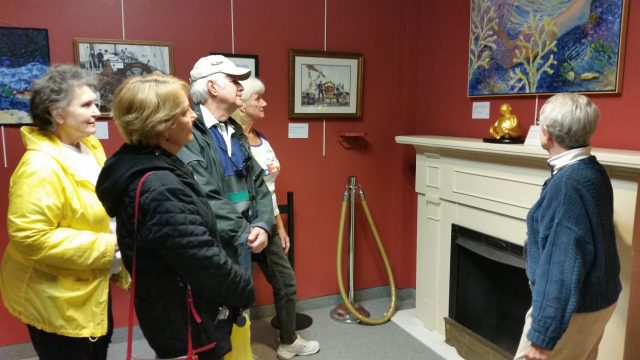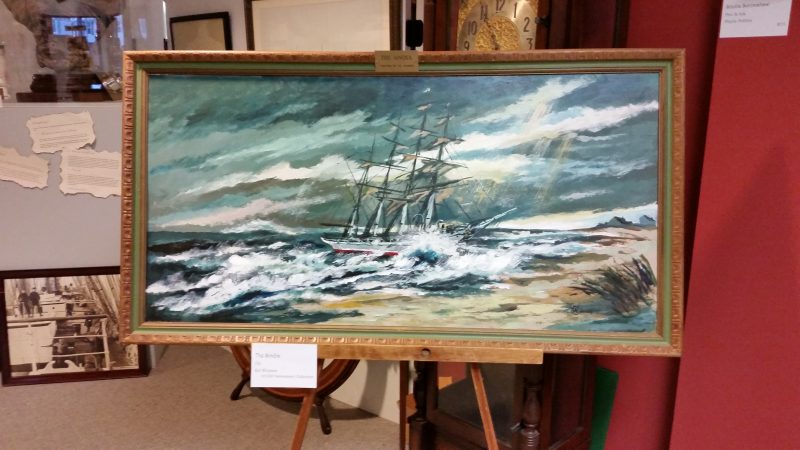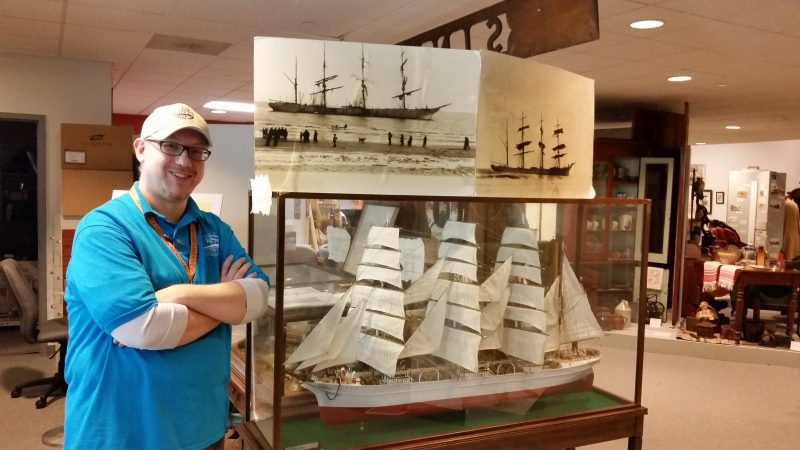
By Donald Wittkowski
Ed Wismer’s striking oil painting of the legendary Sindia gives you the sensation of being there on that fateful day in 1901, when the four-masted ship ran aground in Ocean City.
It’s as if you can hear the ship’s sails flapping in the howling winds, feel the spray of the angry ocean on your face and see the crew members as they frantically tried to save the Sindia in its death throes.
Yet, amid all of the chaos, the painting also depicts streaks of sunlight breaking through the gray storm clouds.
“I like the streaks of sunlight off the clouds. It’s a symbol of hope,” said Jeff McGranahan, executive director of the Ocean City Historical Museum.
The painting by the late Wismer, titled “The Sindia,” is the centerpiece of a new multimedia art exhibit at the Historical Museum that recreates the shipwreck that has become synonymous with Ocean City over the years.
The “Inspired by the Sindia” exhibit, which opened this weekend and runs through Jan. 15, features the works of 10 local artists who have captured the ship and its artifacts in paintings, sculpture, quilt work and etchings on a seashell or paper. The exhibit is free and open to the public.

Among the artwork, sculptor Carla Migliaccio has used clay and acrylic to recreate the Sindia’s storied Golden Buddha statue. Legend has it that the Sindia’s crew stole the Golden Buddha from Japan, resulting in a curse being placed on the ship.
Some of the artwork is up for sale, but Wismer’s painting is a permanent part of the Historical Museum’s collection of artifacts recovered from the 329-foot ship. Prized pieces in the collection include the ship’s brass bell, parts of the hull, the sextant and other navigational instruments and a humidor presented by the Sindia’s captain to members of Ocean City’s Lake family as a thank-you gift for their help after the wreck.
Just a short walk from the museum, the city has placed the ship’s rudder post, a large piece of rusting metal, on display at the corner of 18th Street and Simpson Avenue.
Efforts proved futile to pull the Sindia off the sandbar that would serve as its final resting place after running aground just off the beach between 16th and 17th streets on Dec. 15, 1901. The steel-hulled ship eventually broke apart, but pieces of the wreck remained visible for more than 80 years.

McGranahan explained that the Sindia became part of Ocean City’s folklore because it lasted so long. Instead of disappearing under the waves in one dramatic, final act, the shipwreck slowly deteriorated over time.
“It was out there for so many years. You had a visible reminder,” McGranahan said. “All you had to do was to go out on the Boardwalk, and there it was. Grandparents passed down stories about it to their grandchildren.”
The Sindia, laden with cargo from Asia, was blown aground during a heavy storm while en route to New York. Tales continue to this day about the possibility that the Sindia was carrying a secret shipment of silver coins, and where the smuggled loot may have ended up.
For more information about the Ocean City Historical Museum or the “Inspired by the Sindia” art exhibit, call (609) 399-1801 or visit www.ocnjmuseum.org. The museum is housed inside the Ocean City Community Center, 1735 Simpson Ave.





